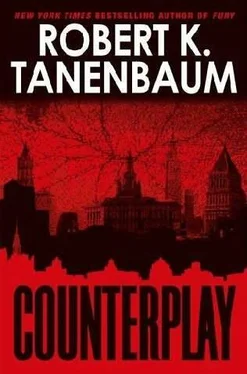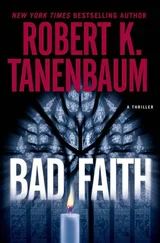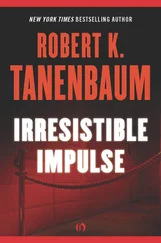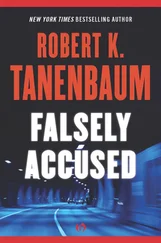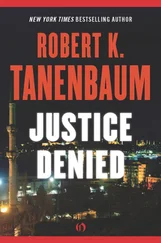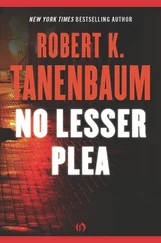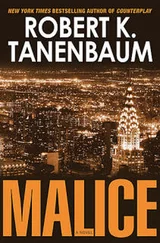Robert Tanenbaum - Counterplay
Здесь есть возможность читать онлайн «Robert Tanenbaum - Counterplay» весь текст электронной книги совершенно бесплатно (целиком полную версию без сокращений). В некоторых случаях можно слушать аудио, скачать через торрент в формате fb2 и присутствует краткое содержание. Жанр: Криминальный детектив, на английском языке. Описание произведения, (предисловие) а так же отзывы посетителей доступны на портале библиотеки ЛибКат.
- Название:Counterplay
- Автор:
- Жанр:
- Год:неизвестен
- ISBN:нет данных
- Рейтинг книги:4 / 5. Голосов: 1
-
Избранное:Добавить в избранное
- Отзывы:
-
Ваша оценка:
- 80
- 1
- 2
- 3
- 4
- 5
Counterplay: краткое содержание, описание и аннотация
Предлагаем к чтению аннотацию, описание, краткое содержание или предисловие (зависит от того, что написал сам автор книги «Counterplay»). Если вы не нашли необходимую информацию о книге — напишите в комментариях, мы постараемся отыскать её.
Counterplay — читать онлайн бесплатно полную книгу (весь текст) целиком
Ниже представлен текст книги, разбитый по страницам. Система сохранения места последней прочитанной страницы, позволяет с удобством читать онлайн бесплатно книгу «Counterplay», без необходимости каждый раз заново искать на чём Вы остановились. Поставьте закладку, и сможете в любой момент перейти на страницу, на которой закончили чтение.
Интервал:
Закладка:
Karp had first heard of the group from Marlene, who’d met one of the members, Charlotte Gates, a forensic anthropologist from the University of New Mexico in Albuquerque. Gates had been called in to exhume the clandestine graves of Indian boys murdered by the demonic priest Hans Lichner; she’d been the first to discover the rosary beads.
Karp had met Swanburg when he needed a forensics expert to testify in the Coney Island Four case. The old man had essentially dismantled the rapists’ version of events.
When Guma presented the Stavros case to the bureau chiefs and questions were raised about the need to find the victim’s body, Karp recalled that 221B Baker Street’s specialty was locating hidden graves of murder victims. When the meeting was over, he’d suggested that Guma give them a call.
Like most law professionals, Guma was leery of amateur sleuths who wanted to play detective. They’ll give you the shirts off their backs, he’d explained his hesitation. But they’ll tear them to pieces in the process. It was clear he was putting the 221B group in the same category as psychics and tarot card readers who regularly call the police to help “solve” crimes. But with nothing left to lose and a major obstacle to overcome to win at trial, Guma called Swanburg. He’d been impressed by the man’s questions and was soon thereafter on his way to Colorado, the group’s home base.
There, the tables were turned. He was asked to present his evidence, as well as his theory on where the body might be located. This time, he was the one peppered with questions by the two dozen 221B members in the auditorium at a local sheriff’s office.
I’ll be honest, Guma told Karp when he returned, I wasn’t expecting that much…but they really put me through the wringer. If nothing else, I learned that I wasn’t half as prepared in this case as I thought I was.
They’d asked him if the moon was absent or full on the night Teresa Stavros disappeared. It might indicate, they said, how much light the killer would have had to work with in the backyard if he hadn’t wanted to turn on the lights. They asked if he knew the composition of the soil, which could affect how deep the killer might have been able to dig. Could Stavros have moved the body from the premises without being seen?
“I basically had to say, ‘I don’t know,’ to a lot of the questions,” Guma said now recalling the inquisition for Karp.
“But he also said, ‘I’ll find out,’ ” Swanburg added, “which is what we wanted to hear. We don’t take all the cases presented to us. We simply can’t with our limited resources and time. So if the cops or, in this case, the DAO, aren’t willing to do their homework, we shake their hands, wish them well, and politely decline.”
Swanburg walked over to Karp’s desk and opened a large manila envelope he was carrying and withdrew two large black-and-white photographs, which he placed on the desk. “One of the questions we asked Ray was the availability of aerial photographs of the Stavros home from before the ‘disappearance’ and after,” he explained. “These photographs are more available than people think-if you know where to look. Places like surveyors’ offices, zoning commissions, the United States Geological Survey, even declassified military photographs-which have the highest resolution, those guys can read a license plate from a satellite. Take a moment and look at the photographs I handed you and tell me what you see. The former Stavros house and yard is the one surrounded by the circle I’ve drawn to make it easy.”
Karp stood up and, resting his knuckles on the desk, leaned over to get a bird’s-eye view of the side-by-side photographs. He felt like a kid being put on the spot in a geography bee. However, when he compared the circled areas on the photographs, he quickly noticed a difference between the two. “The backyard…the one photograph there seems to have more bushes and less of this white space; the other, there’s more white space, with something on it, and fewer bushes.”
“Very good!” Swanburg exclaimed like a proud parent overseeing a homework assignment. “Photograph number one, as you correctly noted, has more vegetation, and was taken by a photographer in a Piper Cub in 1989, two years before Mrs. Stavros disappeared. The photographer was creating a coffee-table book called A Bird’s-Eye View of Manhattan Neighborhoods. Photograph number two, which was taken in conjunction with the experimental mapping of Manhattan with a new satellite, was taken in 1991, three months after she disappeared. By the way, the white space is a patio, probably cement, and that’s a hot tub on it.”
“That’s pretty cool, but what’s it prove?” asked Karp. “Emil got tired of the garden and wanted a hot tub for his mistress…or was she a wife by then?”
“Still a girlfriend,” Guma said. “There was still money in the account, so he hadn’t divorced Teresa yet.” He used the eraser end of a pencil to point to a corner of the house above the former rosegarden-turned-patio. “Zachary said that he remembered the sound of digging that night. And his bedroom was here, above the former rose garden.”
Karp looked at his friend. The old Guma energy was radiating from him, he was gearing up for the fight with relish. Karp looked down at the photograph again. “I’d say if your instincts tell you a judge will grant a search warrant based on this photograph, then go for it.”
“I’ve already got an appointment with Judge Paul Lussman in a half hour,” Guma answered, grinning. “Want to come watch?”
Two hours later, Guma looked up at the opulent brownstone on Manhattan’s Upper West Side as his car pulled up behind a marked police cruiser with a flashing light. A second unmarked car was behind them, followed by another cruiser with its light flashing. He might never get to bring Emil Stavros to justice, but Guma wanted to remind the neighbors that Emil Stavros had killed his wife.
Teresa Stavros had been on his mind a lot lately; in fact, her face as it appeared in the photograph on his wall at work stayed with him long after he left each evening. He’d always made it a point when prosecuting a homicide trial to get to know the victim as well as he could. It was important to make the victim real to the jury, not some character out of a story who had never been flesh and blood.
So he’d talked to anyone he could find who’d known Teresa. There wasn’t much in the way of family outside of Zachary, who could only recollect bits and pieces. But she’d had quite a few friends, especially before she’d married, and some of them dating back to when she was a student at Marymount School of New York. They’d painted quite a picture of a wealthy Italian Catholic girl who was a little bit angel and a little bit devil. She’d been known to leave white mice in the desk drawer of the mean sister and skipped school to try parachuting. She loved the author Tom Robbins, and had once been expelled for bringing his sexy, funny novel Even Cowgirls Get the Blues to school to share with her classmates.
In her college days at Columbia, she would have been the first to strip naked for midnight swims in the Atlantic. A strong swimmer, on a dare she’d even tried crossing the East River where it met the Hudson on the north end of Manhattan at a particularly treacherous spot known as Spuyten Duyvil. Many a strong male swimmer had drowned in its strong currents and undertows, and she had nearly succumbed as well, but crawled out on the Washington Heights side and collected on the bet.
Most of her friends spoke of Emil Stavros with disgust. They’d tried to talk her out of getting serious about him. He was a big talker and had all sorts of grandiose plans-they always thought he was more interested in her trust fund than her love. But it seemed the more they tried to break them up, the harder Teresa fought to stay with him. Then she got pregnant and agreed to marry Emil, determined that her son-she was sure from day one it was a son-wasn’t going to be born a bastard.
Читать дальшеИнтервал:
Закладка:
Похожие книги на «Counterplay»
Представляем Вашему вниманию похожие книги на «Counterplay» списком для выбора. Мы отобрали схожую по названию и смыслу литературу в надежде предоставить читателям больше вариантов отыскать новые, интересные, ещё непрочитанные произведения.
Обсуждение, отзывы о книге «Counterplay» и просто собственные мнения читателей. Оставьте ваши комментарии, напишите, что Вы думаете о произведении, его смысле или главных героях. Укажите что конкретно понравилось, а что нет, и почему Вы так считаете.
